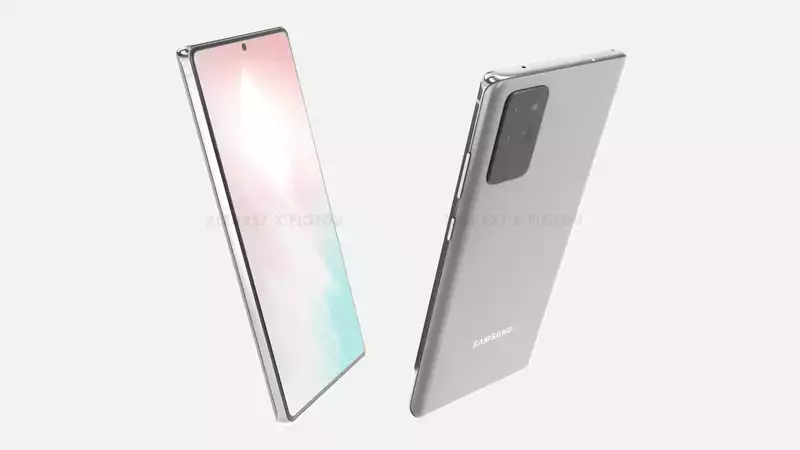Samsung is reportedly working on a new OLED screen technology for its Galaxy Note 20 phone that could reduce power consumption by 20%.
The new display technology is called HOP, an acronym for hybrid oxide and polycrystalline silicon, reports The Elec. It also combines existing screen technologies, although not widely used, and is a fusion of low-temperature polycrystalline oxide (LTPO) and polycrystalline silicon (LTPS).
LTPO screens are already used in the Apple Watch Series 5, for example, to extract as much battery life as possible from smartwatches. However, they have not yet been used in mainstream smartphones.
However, leaks about the Galaxy Note 20 and especially the Galaxy Note 20 Ultra's display suggest that it will lead the way in adding LTPO screens. Now, this latest report indicates that Samsung is building new screen technology based on LTPO, and may suggest that both Note 20 models will feature next-generation OLED displays as a way for Samsung to show off its screen prowess.
With HOP displays and LTPO technology, scene refresh rates can be changed on the fly, rather than having to manually change them in the phone's settings. For example, if you are watching a movie on your phone and do not benefit from a higher refresh rate, the panel can automatically drop from 120 Hz to 60 Hz.
In this way, battery life can be saved, something that phones with high refresh rate displays suffer from. For example, the Galaxy S20 Ultra can only use a 120 Hz refresh rate when the resolution is set to FHD+ instead of the full 1440p resolution.
Phones like the OnePlus 8 Pro and Oppo Find X2 Pro use a maximum resolution of 120 Hz and can dynamically adjust the refresh rate. The Galaxy S20, on the other hand, relies on software and requires users to manually set the refresh rate, and since the higher-end iPhone 12 Pro model is also expected to feature a 120Hz display and change refresh rates, this upgrade will allow the Note 20 will be able to keep up with its biggest rivals without sacrificing much battery life.
With the HOP display, the Galaxy Note 20 can achieve such a dynamic refresh rate without requiring additional hardware components. In addition to reduced power consumption, the thickness of the phone can be reduced because there is no need to place extra components between the phone's graphics accelerator and the display controller.
One of the impressive elements of the Galaxy Note 10 Plus was its slimness for such a large phone.
Combined with the HOP display, upgraded chipset, improved triple rear camera array, and enhanced S Pen, the Galaxy Note 20 and Galaxy Note 20 Ultra could be contenders for the top spot on our Best Android Phones list. The Galaxy Note 20 and Galaxy Note 20 Ultra could be contenders for the top spot on our list of the best Android phones. Apple's iPhone 12 should also bring its A-game, with the powerful A14 chipset and LiDAR scanner in the higher-end models, due to arrive in September.
However, Ice Universe, a serial technology leaker, does not believe the Galaxy Note 20 will be able to deliver a high-resolution display and 120Hz refresh rate. However, we will have to wait and see what Samsung announces in about a month at an event rumored to be held on August 5.










Comments